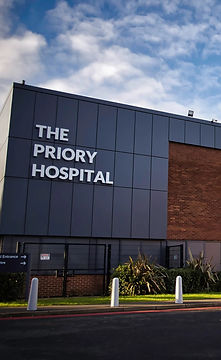Central Serous Retinopathy
by Dr Rupal Morjaria
This is a condition causing central distortion as a result of fluid accumulation under the retina. In most people it improves within a short time period, however some require investigation and treatment.
What is Central Serous Retinopathy (CSR) or Central Serous Chorioretinopathy (CSCR)
Central serous retinopathy (CSR) or central serous chorioretinopathy (CSCR) is a condition where fluid can build up under the retinal layers, most commonly affecting the central retina (macula). This fluid can resolve by itself or remain causing long term changes to the retina and reduced vision (chronic CSCR).
How does it happen?
The choroid is a layer under the retina. CSCR is the condition when fluid leaks between the retina and choroid. The retinal pigment epithelium (RPE) is the layer of the retina next to the chloroid but it does not function as efficiently in CSCR resulting in fluid build up, causing local retinal detachments (serous retinal detachments). These detachments can slowly resolve by themselves. However in some people, the serous detachments may remain and require treatment.
What are the symptoms of CSCR?
Blurred central vision
Distortion vision
Changes in colours or Objects appearing a different size or different distance away
Why do I get it?
CSCR is more common in young men ages 30-50. Some studies show that stress or steroid use are risk factors.
Other factors that have been considered to be related are :
High blood pressure
Type A personality
Sleep disorders
Helicobacter pylori infection
Primary hyperaldosteronism
Autoimmune conditions
How is the diagnosis made?
Dr Morjaria is a retinal specialist who will examine your eyes to help assess the extent of your condition. Dilating drops will be put in both your eyes to allow assessment of the retina so you will not be able to drive after your appointment.
Additional tests that may be required are :
Fluorescein Angiogram
You may need additional tests that involve having a yellow dye injected into your hand to take pictures of the blood circulation in your eye. This will allow Dr Morjaria to assess for areas of the eye that are not getting enough oxygen or areas that need laser treatment to prevent bleeding in your eye.
OCT Scan - Optical Coherence Tomography
The OCT scan is a quick, non-invasive scan which looks at the layers of the retina focusing on the macula region. This provides Dr Morjaria with a detailed picture of the back of your eye. Taking regular images enables more accurate monitoring of your condition over time.
Treatments
Ophthalmologists throughout the world have tried many treatments for this condition, varying from non-steroidal eye drops to various tablets including eplerenone. Trials have found that these treatments did not show a definitive benefit. Some people have shown to benefit from gentle laser to the leaking areas on the retina/choroid or injections to the back of the eye.
A treatment called photodynamic therapy (PDT) has also been shown to help, however not everyone is suitable. Dr Morjaria can discuss your scans with you and advise the most suitable treatments and carry these out.

Locations
A Clinic Near You
The Priory Hospital, Priory Road, Birmingham, B5 7UG
Chamberlain Clinic, 81 Harborne Road, Edgbaston, Birmingham, B15 3HG
Spire Little Aston Hospital, Little Aston Hall Drive, Sutton Coldfield, B74 3UP
6 Church Street, Oakham, Leicester, LE19 1SJ

Birmingham
Priory Hospital

Edgbaston
Chamberlain Clinic

Sutton Coldfield
Spire Little Aston Hospital

Leicester
Coe & Coe

